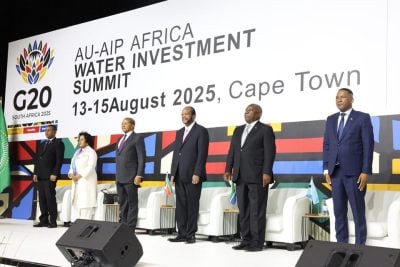This article was produced with the support of United Nations Economic Commission for Africa (ECA)
ECA Executive Secretary Claver Gatete said African countries are in a vicious cycle of spending and revenue mobilisation efforts. “We need to examine all options, but we need to move quickly,” he said.
At one time 80% of debt was concessional but this is no longer the case, and countries are now forced to find more costly sources of finance and dip into their reserves, he said.
Hanan Morsy, Deputy Executive Secretary of the ECA, reminded delegates that the Report of the Independent High-Level Expert Group on Climate Finance found that emerging markets and developing countries (excluding China) require $1 trillion a year by 2024 (4.1% of GDP) and $2.4 trillion a year by 2030 (6.5% of GDP).
The unique challenges, extent of the need and characteristics of the required financing brings significant challenges for the IMF, she said.
The IMF has stepped up with its Resilience and Sustainability Trust (RST), established in October 2022, which helps low-income and vulnerable middle-income countries to build resilience to external shocks and ensure sustainable growth.
Morsy said the number of countries that would likely seek RST programmes, combined with the specificity of the climate and energy issues involved in each, would stretch the IMF’s institutional capacity as never before.
IMF support requires doing more with less, Morsy said. One suggestion was to bring green debt swaps to scale with the Resilience and Sustainability Fund (RSF) functioning as a policy instrument. Another was to provide credit enhancements.
The RSF could be mobilised to boost accountability and transparency for higher private financing.
This could be enhanced by measures including:
- Establishing a national reporting system highlighting key climate performance indicators.
- Establishing a credible and transparent audit process to monitor the use of proceeds raised through ESG financing instruments.
- Publishing a list of eligible projects.
- Developing a green financing framework aligned with the ICMA framework.

 Sign in with Google
Sign in with Google 



